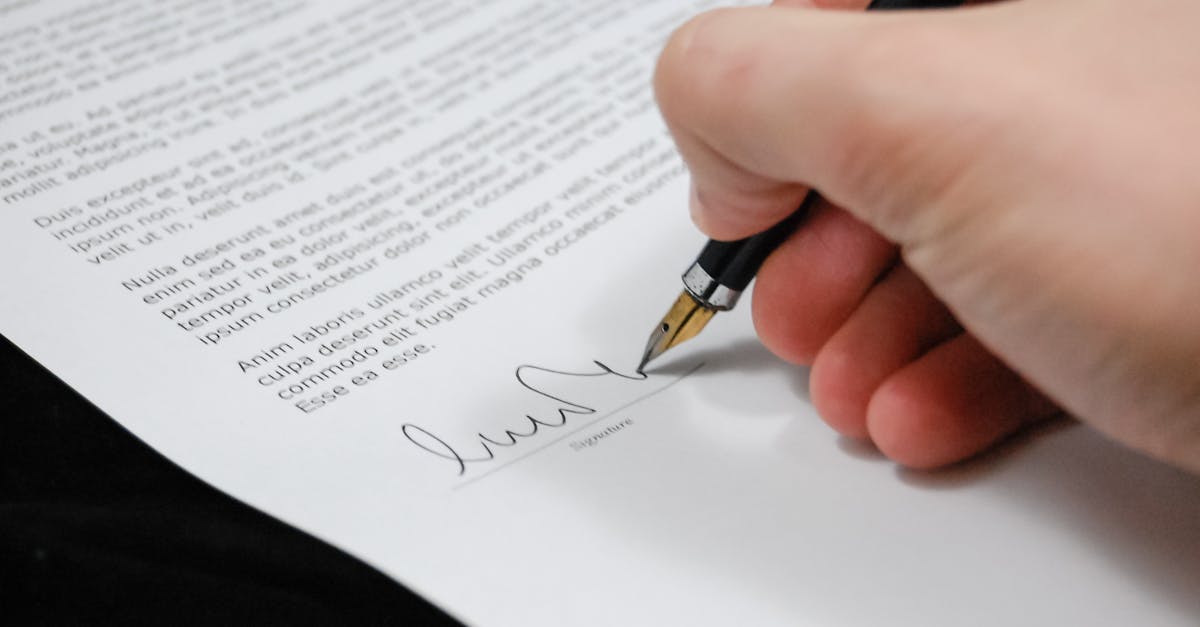
Drafting legal documents
At Markhoff and Mittman - Brooklyn, we specialize in drafting legal documents that are essential for navigating the complexities of the law. Our experienced team understands that precise and well-structured documents are critical in protecting your rights and interests. Whether you need contracts, wills, or pleadings, we take the time to understand your specific situation and tailor each document to meet your unique needs. Our commitment to clarity and accuracy ensures that your legal documents are not only compliant with relevant laws but also reflect your intentions and goals. Trust us to provide the meticulous attention to detail that every legal document requires, helping you move forward with confidence.
Common Issues in Legal Document Preparation
Legal documents often suffer from a range of common issues that can lead to confusion or misinterpretation. Ambiguity is a frequent problem, especially when definitions and clauses are not clearly articulated. This lack of clarity can create disputes in various contexts, from employment contracts to civil litigation. Lawyers must ensure that every term is well-defined and every sentence precise to avoid any potential misinterpretation during the legal processes.
Another critical issue is the inconsistent application of regulations and statutes. This inconsistency can arise from incomplete legal research or outdated precedents, resulting in documents that fail to comply with current laws. Without diligent attention to the most recent developments in legal writing, attorneys risk producing pleadings and legal opinions that are not only inaccurate but potentially detrimental to their clients' interests. Regular feedback from peers or paralegals can provide valuable insights to improve accuracy and overall effectiveness in legal document preparation.
Potential Problems and How to Avoid Them
The preparation of legal documents often presents a range of challenges that can lead to significant issues if not addressed properly. Common pitfalls include vague language that can lead to misinterpretation and failure to include essential terms that define the rights and obligations of the parties involved. For instance, when drafting contracts, overlooking specific clauses related to dispute resolution or confidentiality can create loopholes that may jeopardize enforcement. Ensuring that all terms are clearly defined is vital in minimizing the risks associated with legal disputes.
One effective way to preemptively tackle these issues is to adopt a systematic approach focused on accuracy and thoroughness. Implementing checklists during the drafting process can help identify key elements that must be covered. Furthermore, involving multiple stakeholders in the review process adds layers of scrutiny that can catch potential oversights before finalization. Utilizing templates for commonly used legal instruments can also enhance consistency and reduce the likelihood of errors. Choosing to collaborate with experienced legal professionals or outsourcing specific tasks can provide an additional safeguard against common drafting errors, ultimately leading to higher-quality legal documents.
Enhancing Clarity in Legal Writing
Clarity in legal writing is essential for ensuring that documents effectively convey their intended messages. Legal professionals must strive to eliminate jargon and technical terminology that can confuse readers. Instead, employing plain language helps to enhance understanding, particularly for clients who may not have extensive legal knowledge. Providing clear definitions for necessary legal terms can further aid comprehension. This approach supports better decision-making processes and enables clients to grasp the implications of legal documents, from contracts to wills.
Utilizing logical reasoning in legal drafting is crucial for presenting arguments persuasively. Following a logical structure can mitigate the risk of fallacies that might undermine the strength of a document. For instance, in drafting motions to dismiss or complaints, outlining the cause of action with precision allows judges and administrative agencies to quickly grasp the essence of the argument. Furthermore, careful editing can refine this clarity. Revising drafts with tools like Microsoft Word or Clio can increase efficiency, ensuring that all aspects of the documentation align with legal standards while being understandable to a wider audience.
Techniques for Clear and Direct Language
Clarity in legal writing is crucial for ensuring that all parties understand their rights and obligations. Keeping sentences concise and avoiding jargon can significantly enhance the readability of legal documents. Short, straightforward sentences help communicate complex legal concepts without losing essential details. The use of plain language minimizes confusion, particularly in binding agreements and contracts where misinterpretation can lead to litigation or disputes.
Utilizing active voice is another effective technique to improve clarity. When the subject performs the action, the writing becomes more direct and engaging, reducing ambiguity. Also, it is important to define legal terms clearly when they first appear in a document. This practice helps ensure that all readers, regardless of their legal background, comprehend the material fully and can make informed decisions. Implementing these techniques contributes to more effective communication in the legal profession and fosters confidence among clients and stakeholders.
Technology's Role in Legal Drafting
In recent years, technology has transformed the landscape of legal drafting, introducing tools that enhance efficiency and accuracy. Document automation software streamlines the creation of legal documents, reducing the time lawyers spend on repetitive tasks. By using templates and pre-existing clauses, attorneys can focus their efforts on tailoring content to meet specific client needs. This shift not only increases productivity but also minimizes the potential for errors that can arise from manual drafting processes.
The integration of technology in legal drafting also supports clarity, with tools designed to help legal professionals use plain language effectively. Software solutions can identify complex jargon and suggest simpler synonyms for more straightforward communication. This capability is particularly vital in property law and other areas where misunderstandings can lead to disputes. Ultimately, the role of technology in legal drafting empowers professionals to produce clear, concise, and legally sound documents while leveraging modern innovations for improved outcomes.
Tools That Improve Efficiency and Accuracy
The rapid advancement of technology has significantly reshaped the landscape of legal document preparation. Version control systems are essential for tracking changes, ensuring that all revisions are documented and accessible to multiple users. By utilizing collaborative platforms, legal teams can streamline communication and maintain an organized workflow, minimizing the risk of errors often associated with document sharing. This collective effort is crucial in maintaining accuracy across various legal contexts such as mergers and acquisitions or property rights disputes.
Moreover, contemporary software tools designed for legal drafting enhance the clarity and precision of documents. Many of these tools integrate artificial intelligence to suggest improvements in language, highlighting overused passive verbs or vague terms that can obscure meaning. Legal professionals can leverage these tools to refine their writing while adhering to established precedents and legal terminology. The combination of specialized drafting software and robust legal research solutions improves overall efficiency, allowing attorneys to focus on crafting compelling arguments and solid legal advice for their clients.
FAQS
What are some common issues faced in legal document preparation?
Common issues include vague language, inconsistencies, failure to comply with legal standards, and poor organization, which can lead to misunderstandings or disputes.
How can I avoid potential problems when drafting legal documents?
To avoid potential problems, ensure you understand the relevant laws, use clear and precise language, review documents for consistency, and seek feedback from peers or legal experts.
What techniques can enhance clarity in legal writing?
Techniques for clear legal writing include using plain language, breaking complex ideas into simpler components, avoiding jargon, and structuring documents logically with headings and bullet points.
How does technology improve legal drafting?
Technology improves legal drafting by providing tools that automate repetitive tasks, ensure compliance with legal standards, enhance collaboration, and facilitate document management, leading to greater efficiency and accuracy.
What tools can help streamline the legal drafting process?
Tools that can help include document automation software, legal research databases, collaboration platforms, and proofreading applications, all of which contribute to a more efficient drafting process.
